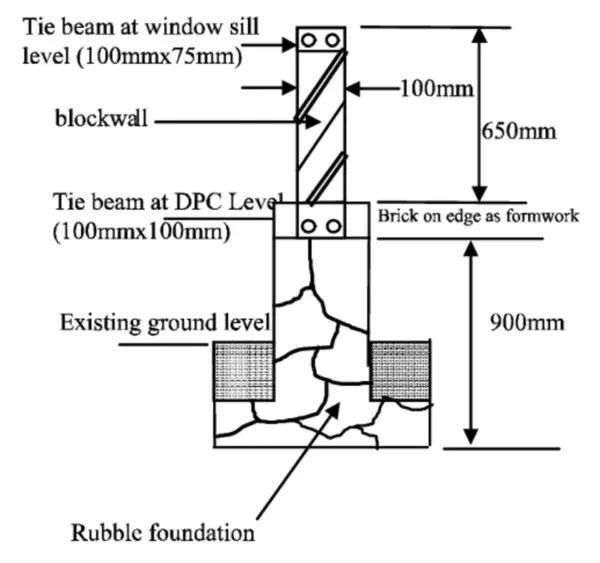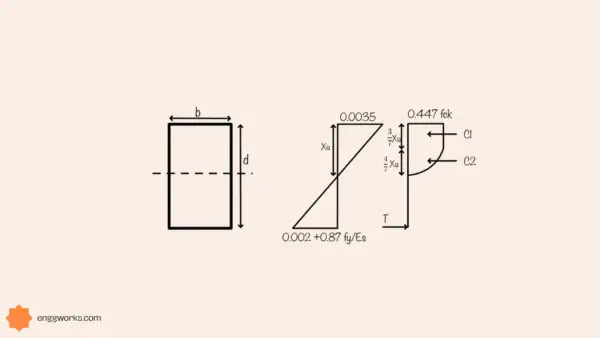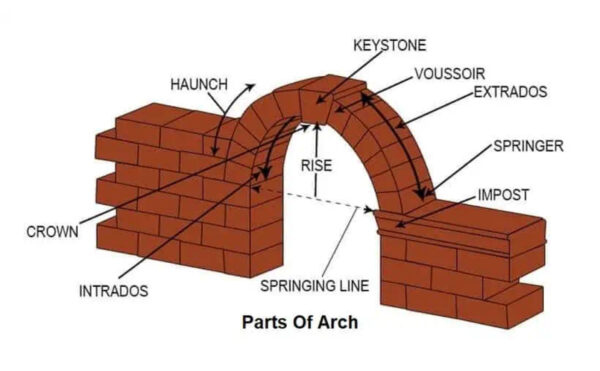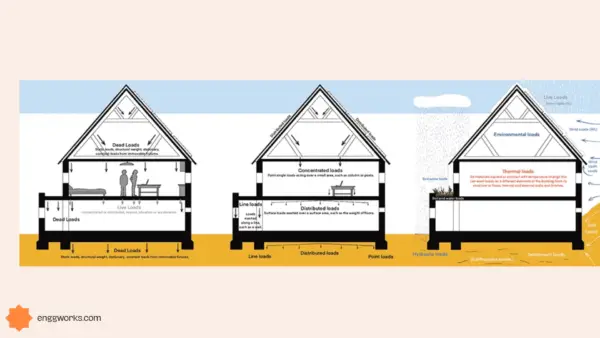Tunnel construction is a complex undertaking that requires advanced engineering and construction practices to complete successfully. Tunnels are critical infrastructure that provide underground pathways for transportation, utilities, and more.
This guide covers key considerations for tunneling including methods, challenges, types, processes, equipment, and technologies.
What is a Tunnel?
A tunnel is an underground passageway that provides transportation or utility conveyance beneath roads, railways, waterways or other obstacles. Tunnels are excavated through soil and rock and require structure to safely support the loads above.
Some key attributes of tunnels:
- Provide underground conduit for roads, rail, pipelines, etc.
- Require excavation through rock or soil to create passageway
- Must be structurally reinforced to withstand earth and live loads
- Ventilation, lighting and safety systems are critical
- Sizes range from small utility tunnels to large transit tunnels
- Complex facilities like cave gateways and equipment rooms are common

Methods of Tunnel Construction
Several methods are used to construct tunnels depending on factors like ground conditions, tunnel use, location and project constraints:
Cut-and-Cover Tunnels
A trench is excavated from the surface and the tunnel built within it. The tunnel is then covered over with backfill. Best for shallow tunnels.
Drill-and-Blast Tunnelling
Explosives drill and blast through rock to advance the tunnel. Mucking equipment clears debris. Adds ventilation needs.
Tunnel Boring Machines (TBM)
TBMs are large mechanized excavators that continuously drill through rock and soil. They install tunnel supports as they go. Highly automated.
Sequential Excavation Method (SEM)
Excavation, reinforcement and ground improvement applied in sequential steps. Allows flexibility in mixed conditions.
Immersed Tube Tunnels
Tubes prefabricated in a basin are floated and sunk into a trench before being connected and buried. Used underwater.
Jacked Box Tunnels
A box-shaped reinforced concrete structure is constructed below ground by hydraulically jacking it along its route.
Challenges of Underground Tunnel Construction
Tunneling comes with significant engineering and construction challenges:
- Controlling groundwater inflows, soil conditions and cave-ins
- Withstanding high stresses from soil, rock and groundwater pressures
- Providing adequate ventilation, air quality and temperature control
- Minimizing noise, vibration and environmental impact
- Logistics of transporting excavated material and inserting supports
- Monitoring and mitigating surface settlements caused by excavation
- Limiting disruption to existing infrastructure like utilities and foundations
- Maintaining safe conditions with dust, gases, confined spaces and equipment
Advanced planning, testing, modeling and monitoring are crucial when constructing tunnels to overcome these challenges.
Types of Tunnels Used in Civil Engineering
Common types of tunnels designed by civil engineers include:
- Transportation Tunnels – Roadway or railway tunnels for vehicles and trains to pass through mountains or below congested city centers.
- Utility Tunnels – Smaller tunnels carrying vital electricity, water, sewage and telecommunications lines below grade.
- Culverts – Drainage tunnels allowing water to flow under infrastructure like roads, railways, runways and canals.
- Pedestrian Tunnels – Provide safe underground pedestrian movement across busy streets or other divides.
- Pipeline Tunnels – Enclose and protect critical pipelines carrying water, oil, gas, chemicals and other materials.
- Hydropower Tunnels – Hydraulic tunnels deliver water from dams to power stations for electricity generation.
- Spillway Tunnels – Tunnel conduits designed to control excess water flows at dams and prevent overtopping.
Tunnel Construction Process Step-by-Step
Tunnel construction generally follows a phased sequence of steps:
- Conduct extensive site investigations – subsurface conditions, utilities, existing infrastructure constraints.
- Analyze survey data and create tunneling plan – tunnel size, path, depth, risks, access points.
- Excavate access portals where the tunneling will begin. Shore and stabilize portals.
- Install environmental controls – ventilation, lighting, utilities, water control and drainage.
- Advance main tunnel excavation using controlled drill and blast, TBM, SEM or other methods. Install initial ground supports.
- Erect final tunnel structure – cast concrete lining, finished wall panels, inverts.
- Install safety systems – cameras, alarms, fire suppression, communications lines.
- Build interior tunnel components – lighting, ventilation, traffic controls, signage.
- Finish portal connections, roadways, utilities. Backfill and stabilize surface areas.
- Test systems thoroughly. Commission tunnel and begin operations.
Tunnel Lining Materials
Tunnel linings provide structural integrity, inhibit water ingress and prevent collapse. Common materials include:
- Shotcrete – Sprayed concrete reinforced with steel mesh or fibers. Quickly stabilizes excavations.
- Cast-in-Place Concrete – Concrete poured into forms provides durable finished lining. Slower installation.
- Precast Concrete Segments – Segmental rings installed as tunnel advances. Gasketed joints seal out water.
- Steel Ribs with Lagging – Temporary support using steel ribs with wood lagging between.
- Steel Plates – Steel plate lining can be installed rapidly to support unstable soils.
- Membrane Waterproofing – Applied to lining exterior to prevent groundwater infiltration.
Proper water control and durability determine tunnel liner selection.
Equipment Used for Tunnel Construction
Tunneling relies on specialized heavy equipment suited to underground work:
- Tunnel Boring Machines (TBMs) – Massive mechanized excavators for efficient tunnel drives.
- Hydraulic Breakers – Powerful hammers that fracture rock for drill and blast excavation.
- Roadheaders – Boom-mounted cutting heads that excavate hard rock in small passes.
- Muck Cars – Railcars or trucks for removing excavated material and spoil. Critical for efficiency.
- Shotcrete Mixers and Spray Rig – Mix and spray concrete lining material on tunnel walls.
- Grout Mixers – Blend and pressurize grout for filling voids behind linings.
- Segment Erectors – Special cranes that lift and place precast concrete segments.
- Personnel Carriers – Multi-person vehicles for safe access along tunnels under construction.

How to Waterproof Tunnels during Construction
Controlling groundwater is imperative when tunneling. Waterproofing strategies include:
- Spraying water-resisting membranes on exterior of tunnel lining
- Installing waterproofing board or geosynthetic membranes behind final lining
- Using water-repellent concrete admixtures in tunnel lining mix
- Injecting chemical grouts through boreholes to form impermeable barrier
- Placing impermeable cut-off walls at sides of tunnels by slurry trench method
- Sealing tunnel liner segment joints with gaskets, sealants and waterstops
- Providing robust drainage behind tunnel lining to capture and redirect infiltration
- Considering freeze wall methods to temporarily immobilize groundwater in soil
Importance of Ventilation in Tunnel Construction
Proper ventilation during construction and operation is vital for:
- Removing dust, gases and diesel fumes from workings
- Providing fresh breathable air supply to crews
- Cooling and temperature control to avoid heat exhaustion
- Controlling humidity which can weaken tunnel supports
- Preventing buildup of flammable and toxic gases
- Clearing smoke in emergencies and fires
- Ventilating the long lengths of finished tunnels for user safety
Large ventilation ducts must be integrated into tunnel designs with equipment like fans, dampers, and air treatment systems.
Risks and Hazards of Tunnel Construction
Tunneling crews face considerable dangers including:
- Falls – From heights, sinking material, slippery surfaces and uneven terrain
- Rockfalls – Collapses and shifting of fractured rock during excavation
- Fire and Explosion – Flammable construction materials, equipment fuels and gases
- Electrocution – Contact with damaged wiring and utilities
- Gas Exposure – Inhalation of toxic fumes from equipment exhaust
- Confined Spaces – Restricted access and poor ventilation
- Ground Collapse – Sudden unstable soil failures and cave-ins
- Flooding – Inundation from groundwater seepage or burst pipes
- Vehicle Traffic – Trucks and machinery movements in tight spaces
Safety training, regulations, monitoring and rescue planning are essential to protect crews.
History of Tunnel Construction Methods
Tunneling has evolved considerably throughout history:
- Hand Mining – Hammers and chisels used to painstakingly excavate early tunnels like in Roman aqueducts. Extremely slow.
- Gunpowder Blasting – Introduced in the 1700s, explosives accelerated hard rock tunneling. Remained dangerous.
- Mechanized Drills – Hydraulic and compressed air drills developed in the 1800s increased tunneling speed and progress.
- Temporary Linings – Timber and iron allowed larger excavations before final linings installed.
- Rotary Cutters – Circular rock cutting heads advanced hard rock tunnel performance from the 1930s.
- Tunnel Boring Machines – Modern large-scale automated TBMs now dominate long tunnel excavations.
Technology Used in Modern Tunnel Construction
Cutting-edge technology improves tunnel construction:
- Laser Scanning – Creates detailed 3D models of existing conditions to analyze before tunnel design.
- Augmented Reality – AR headsets guide operators, highlight hazards and improve training.
- Monitoring Sensors – Fiber optic sensors track ground movement, load, and strain in real-time.
- Automation – Remote control and semi-automated systems remove operators from hazards.
- Predictive Analytics – Advanced data modelling optimizes excavation rates, power consumption and more.
- Battery Electric Machines – Zero-emission electric vehicles improve air quality underground.
- Floating Tunnel Elements – Innovative submerged, tethered tunnel segments may transform underwater tunnels.
Conclusion
Tunnel construction represents some of the most complex and challenging projects in civil engineering. Advances in technology are making tunneling more efficient, but it remains an enormously difficult undertaking. From managing underground risks to engineering durable structures that last over a century, tunnel construction requires broad expertise across geology, materials, planning, ventilation, surveying, safety, equipment and more. With tunnels providing critical infrastructure worldwide, the civil engineers, contractors and crews that take on these massive underground projects continue to be innovators pushing the boundaries of underground construction.







